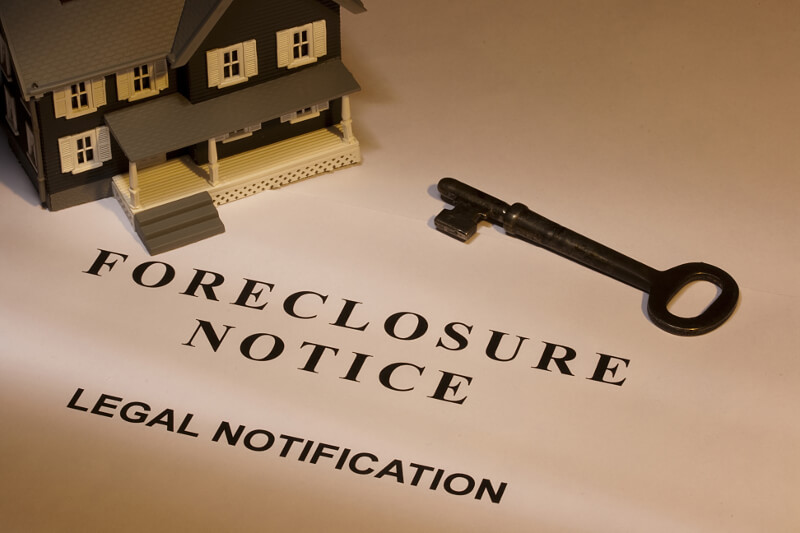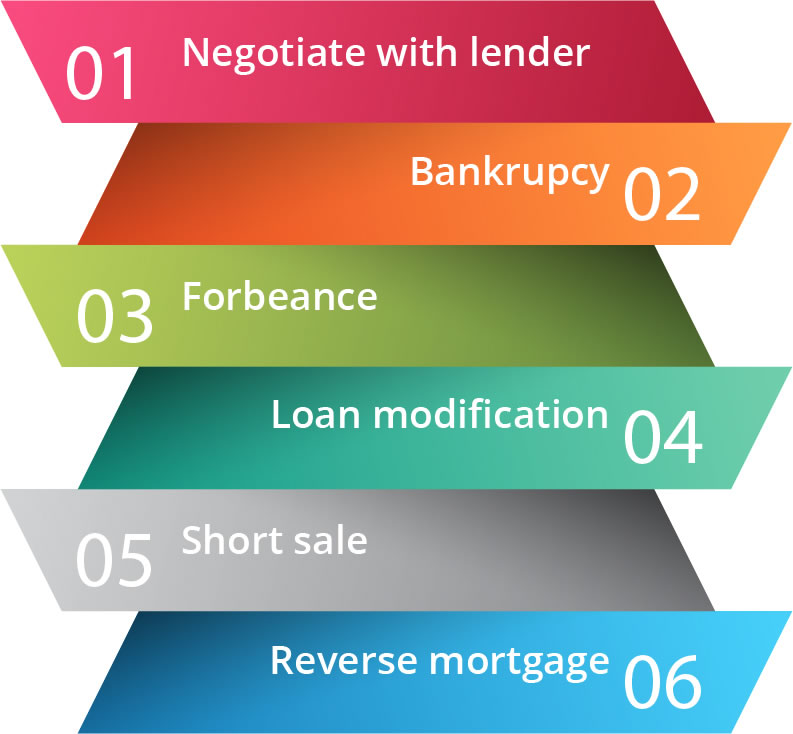What are my options to prevent foreclosure?

The last thing you want to receive by mail is a foreclosure notice. This can only mean one thing: you have fallen behind on your mortgage payments, and your lender has begun the process of repossessing your property. As scary as this may be, you shouldn’t give up just yet. Although you’re in a precarious situation, there still are steps you can take to avoid foreclosure. Before we go any further, here’s the one thing you need to remember: you should never hide from your lender. This may be the easiest thing to do, but will eventually end with you losing your home.
Take these Steps
As a homeowner, you never want to consider the harsh reality that your lender is capable of taking your property. If you fall behind on mortgage payments, regardless of the reason, they have the right to do exactly that. Stopping foreclosure is easier said than done, but here’s the good thing: there are several strategies you can employ to put yourself in a better position. First things first, you may want to look into the benefits of foreclosure counseling. For example, the U.S. Department of Housing and Urban Development (HUD) provides foreclosure avoidance counseling. With this, you will receive the information and guidance you need to avoid foreclosure. Note: although you can pay a private company for foreclosure counseling, you don’t have to do this. Instead, you can rely on a public program, such as the one offered by HUD, which is provided free of charge.
Here are several other steps to consider if you need to avoid foreclosure:

1. Negotiate with your lender.
This is by far the best thing you can do. As noted above, you don’t want to run and hide. Instead, you want to show your lender that you’re interested in doing whatever it takes to save your home and set things straight again. Remember this: your lender is not in the business of owning homes. Instead, they are in the business of servicing loans. For this reason, they don’t want to foreclose on your property. They would much rather work out a deal that is mutually beneficial.
2. Bankruptcy.
Did you know that filing for bankruptcy will stop foreclosure for the meantime? With an automatic stay in place, your lender is required by law to stop the process. This doesn't last forever, but it may buy you enough time to get back on track. If you’re interested in this, be sure to consult with a bankruptcy attorney. Your legal team can provide advice on which type of bankruptcy – Chapter 7 or Chapter 13 – is best for you.
3. Forbearance.
In short, this allows you to make no payment, or a reduced payment, for an agreed upon period of time. This gives you enough time to regain your footing. From there, you will pick up with regular payments while making up those that you missed at the end of the loan. Note: lenders are most likely to agree to this if you can prove that your financial situation will change in the future, such as if you recently landed a job after a bout of unemployment.
4. Loan modification.
Would you feel better about your ability to make future mortgage payments if the terms of the loan were different? If so, you need to speak with your lender about a loan modification. As the name suggests, this is when your lender alters the terms and conditions of your loan so you can afford to make future payments. For instance, the lender may agree to a longer term as a means of lowering your payment. Or maybe they allow you to add missed payments to the balance, thus starting fresh. There are many types of loan modification, so make sure you keep an open mind. You don’t want to turn down an offer just because it’s not exactly what you were looking for.
5. Short sale.
This may not be something you want to do, as it means you are getting rid of your home, but most agree that it is better than foreclosure. With a short sale, the lender agrees for you to sell your home for less than what you owe. This allows you to get out from underneath the property, all without the damage of a foreclosure. Tip: you need to discuss a short sale with your lender, as they may or may not agree to this.
6. Reverse mortgage.
Although it’s not as popular as other strategies on this list, a reverse mortgage is an idea to consider if you are faced with foreclosure and want to keep your home. Through a reverse mortgage, you can payoff your existing debt as a means of saving your home. Once the lump sum payment is made to the lender, there are no more monthly mortgage payments. Subsequently, you have nothing to worry about and are able to remain in your home.
Questions to Answer
Since no two homeowners are in the same situation, you need to strongly consider every strategy before you decide what to do next. Along with this, answer the following questions:
- How many notices have you received from your lender?
- How many payments have you missed?
- When was the last time you communicated with your lender?
- Has your lender offered any advice on how to stop foreclosure?
- Are you comfortable hiring an attorney to provide you with assistance?
By answering these questions, among any others that come to mind, you will better understand your situation. Conclusion Nobody wants to face foreclosure, but it’s good to know that there are steps you can take to keep your home. If you implement the right strategy, it won’t be long before you are putting the foreclosure process in the past and making payments as scheduled in the future.